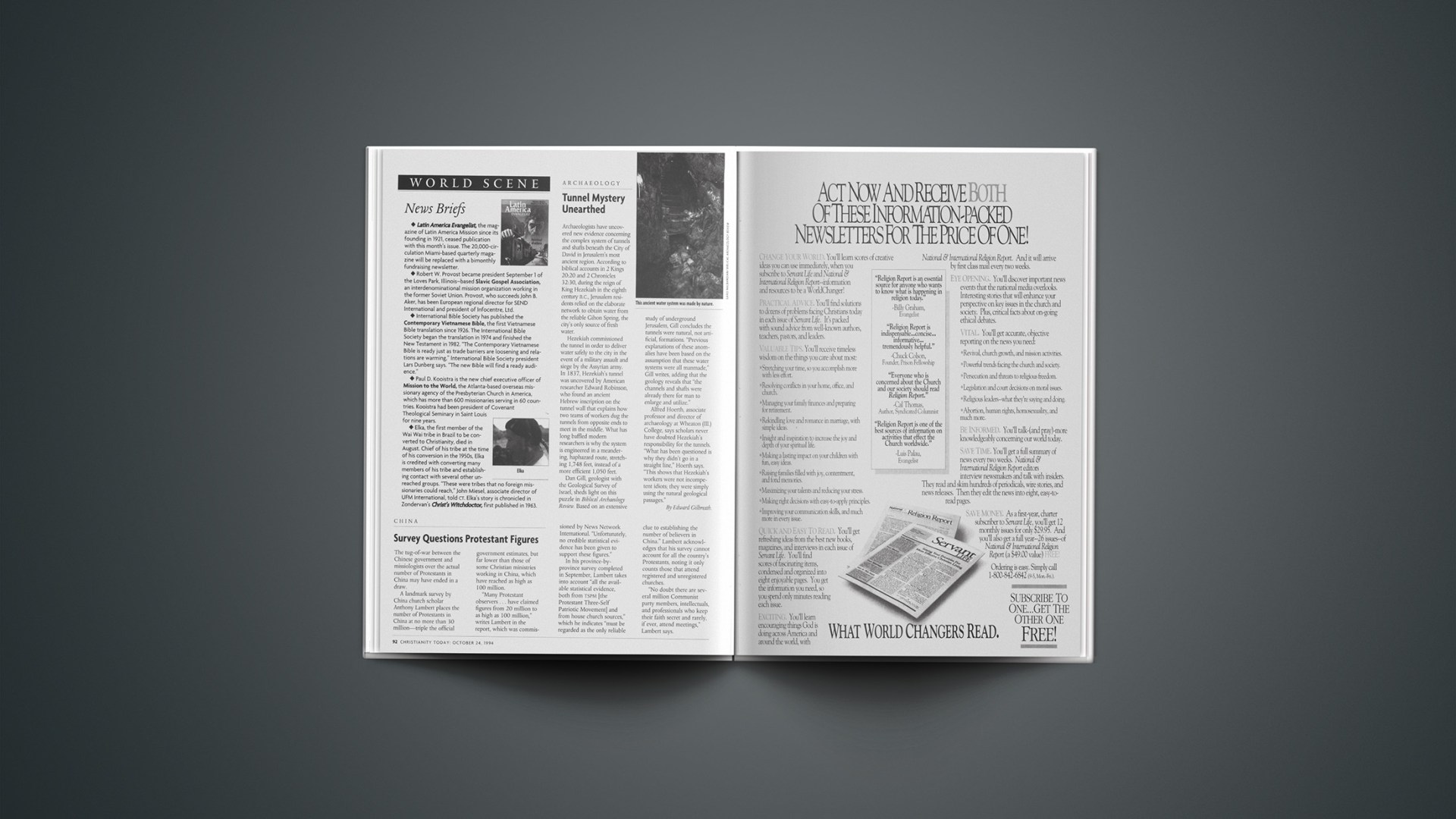Archaeologists have uncovered new evidence concerning the complex system of tunnels and shafts beneath the City of David in Jerusalem’s most ancient region. According to biblical accounts in 2 Kings 20:20 and 2 Chronicles 32:30, during the reign of King Hezekiah in the eighth century b.c., Jerusalem residents relied on the elaborate network to obtain water from the reliable Gihon Spring, the city’s only source of fresh water.
Hezekiah commissioned the tunnel in order to deliver water safely to the city in the event of a military assault and siege by the Assyrian army. In 1837, Hezekiah’s tunnel was uncovered by American researcher Edward Robinson, who found an ancient Hebrew inscription on the tunnel wall that explains how two teams of workers dug the tunnels from opposite ends to meet in the middle. What has long baffled modern researchers is why the system is engineered in a meandering, haphazard route, stretching 1,748 feet, instead of a more efficient 1,050 feet.
Dan Gill, geologist with the Geological Survey of Israel, sheds light on this puzzle in Biblical Archaeology Review. Based on an extensive study of underground Jerusalem, Gill concludes the tunnels were natural, not artificial, formations. “Previous explanations of these anomalies have been based on the assumption that these water systems were all manmade,” Gill writes, adding that the geology reveals that “the channels and shafts were already there for man to enlarge and utilize.”
Alfred Hoerth, associate professor and director of archaeology at Wheaton (Ill.) College, says scholars never have doubted Hezekiah’s responsibility for the tunnels. “What has been questioned is why they didn’t go in a straight line,” Hoerth says. “This shows that Hezekiah’s workers were not incompetent idiots; they were simply using the natural geological passages.”
Copyright © 1994 Christianity Today. Click for reprint information.










